StoryWeaver Spotlight: Pallavi Rao
Posted by Remya Padmadas on October 04, 2019Pallavi Rao has done her MA in English and loves music, literature and painting. She is the daughter of well-known Kannada writer Vaidehi, and has worked on a compilation of talks by eminent theatre personality Sri B.V Karanth (edited by Sri Muralidhar Upadhya). Pallavi has been teaching PU students in several places and currently resides in Delhi. She has translated several storybooks to Kannada including The Night the Moon Went Missing and A Whistling Good Idea on StoryWeaver.
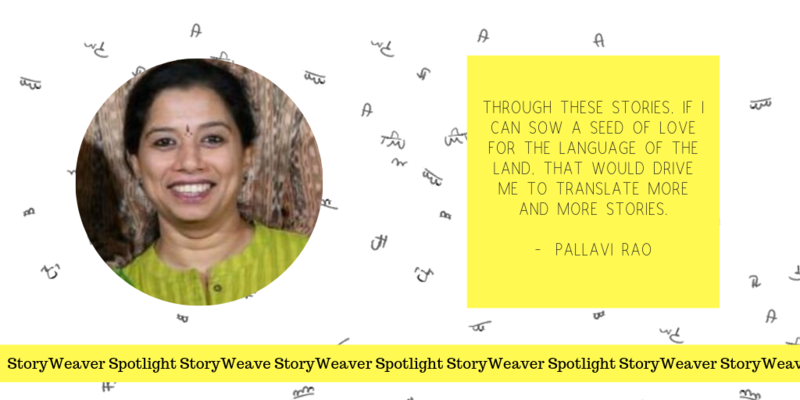
Q: You carve out time for translating children’s books from a busy life. What do stories in translation bring to young readers?
Young readers unknowingly come to know the culture, way of life and language at a young age itself. I think it is very important to imbibe these qualities at a young age.
Q: What is your personal relationship to language and/or translation?
Kannada being my mother tongue, I have read and listened to several great writers and thinkers in Kannada. I breathe my language and this helps me bring stories into Kannada.
Q: What is your take on translation?
Translation is a very responsible task. You have to translate the story keeping its original flavour intact and at the same time giving it the flavor of the language it is translated into. One should have a grip on both the languages i.e., from which you are translating and the one to which it is being translated into.
Q: Translating certain stories must have required a lot of research, especially when it came to STEM-related terms and concepts. For example, stories like A Whistling Good Idea. How did you explore new objects and concepts?
When I read a story to be translated, I dwell on it and begin thinking it in my language. It helps me to understand the story in local circumstances so that I can translate accordingly. While translating concept-oriented stories like ‘A Whistling Good Idea’, I felt it was such a nice way to make a child understand the concept in a playful manner. Difficult concepts are quite hard for children, but when the same concept is told through games, it becomes simple and hence is more understandable and easy for a child.
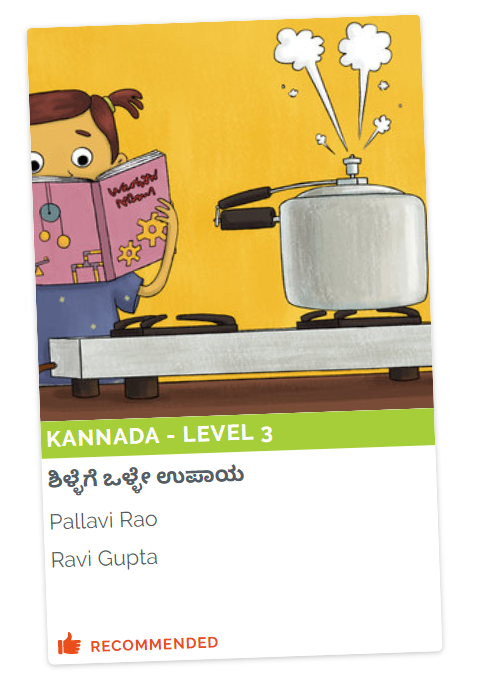
'A Whistling Good Idea', translated by Pallavi Rao
Q: You have contributed for us immensely. How has the StoryWeaver journey been? What is one big takeaway from this experience?
Overwhelming. By repeatedly wearing a child’s shoe while translating, it has made me more observant and my mind keeps weaving stories for children from whatever I observe around me!
Q: How do you feel when your story reaches the child?
If I can ignite the imagination of a child and add to the child’s vocabulary through my stories, nothing would be more satisfying.
Q: What is your key driver in taking up translation of stories into Kannada?
I have a very strong feeling towards my language. Children in big cities in my state rarely speak Kannada, which is very disturbing. Through these stories, if I can sow seed of love for the language of the land - that would drive me to translate more and more stories.
Q: How else do you think we can join hands to take more stories to more children in more languages?
India has abundant folk stories and poems for children in regional languages. They have to be made reachable to more children in other languages too. For example, in Kannada, we have stories of Panje Magesh Rao, Hoysala, Ullala Mangesh Rao, Ugrana Mangesh Rao, Rajaratnam and so on. Apart from translating stories from English to regional languages, I feel that we should also translate stories from regional languages to English and to other regional languages as well.
Q: When you have been given a story to translate, what is your process, and how long does it generally take?
I read the entire story two or three times, linger on the story and try to visualize the same while working on other chores. I try to keep the language simple, use more of sound words to make it more attractive and increase the vocabulary in children.
Q: What is the hardest thing about translating from English into Kannada? How do you navigate words or phrases that are tricky to translate?
Certain English concepts are not present in Kannada. For example, we don’t have a ‘cape’ in our costume. In such times we have to coin a word in Kannada and ensure that the image is translated successfully to the child.
Q: Do you have any advice for anyone interested in becoming a translator?
Keep the language as simple as possible and make it interesting for children by visualising the story yourself to get the best output.
Q: A book you'd like to recommend to other translators?
From the ones that I have translated it would be ‘A Whistling Good Idea’.
Q: Can you tell us anything about yourself and your job that would surprise us?
Cooking and painting interests me to a large extent. Experimenting techniques in both the fields are the same, I feel.
We would love for you to join the conversation by leaving your thoughts in the comments section, or on social media: Facebook, Twitter, Instagram
Be the first to comment.StoryWeaver signs an MoU with the Kerala Government
Posted by Vineetha Menon on June 20, 2019Vineetha from the Partnerships Team talks about StoryWeaver’s collaboration with the Kerala government’s initiative, KITE, (Kerala Infrastructure and Technology for Education) to take our books to more teachers, classrooms, and students through their digital initiatives.
It’s a bright, sultry day in May at Cotton Hill high school in Trivandrum where an ICT training session for 150 primary school teachers is underway. Cotton Hill school is one among the 500 such locations across the state where teachers are currently being trained by the KITE,a Kerala government initiative, on the latest ICT innovations for the classroom. Over the last 3 weeks, the academic team at KITE has been conducting large scale trainings for nearly 90000 teachers at nearly 500 locations across the state part of ICT capacity building initiatives.
Kerala Infrastructure and Technology for Education (KITE) is a Govt of Kerala establishment set up to foster, promote and implement modernisation of state run and aided educational institutions in Kerala.
As part of the Hi-Tech school project that works with over 9000 primary schools, it is conducting a large scale training for government school teachers. The objective of this training is to train teachers on the latest tools and platforms and basic ICT tools such as open source software for documentation and processing, spreadsheets, audio recordings,and more.
And here’s where StoryWeaver fits in.
StoryWeaver, is now one of the tech platforms that primary teachers in Kerala will be trained on annually.
Our collaboration with KITE is very special to us, thanks in no small part to their commitment to the open source philosophy. In fact, KITE was recently in the news for its massive success with the use of open source software in Kerala government schools. After our initial meetings with the KITE team, and our shared commitment to ensuring open access, we couldn’t wait to get this collaboration off the ground. It began with the annual training that StoryWeaver was integrated into. The academic team at KITE explored the platform and further trained master trainers who took the programme out to the field and the 90000 primary teachers across the state.
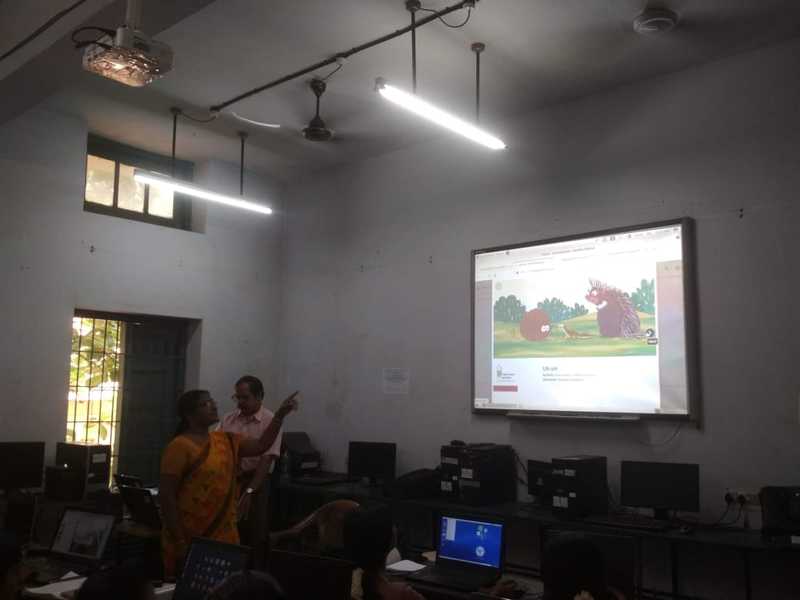
At the training in Cotton Hill school, we met Sadhana M and Anthony Raj, two government school teachers and masters trainers for KITE who are leading the training on StoryWeaver. Cotton Hill school is one of the 12 centres in Trivandrum where this training is being conducted.
When asked about the common struggles they face as language teachers, Sadhana who has been teaching in government schools for over 20 years, says “The level of the books is either too high or too low. It’s always a challenge to find something that’s just right for our students.”
When asked what the children liked to read, they added that in most schools in Kerala, children are exposed to mainly English and Malayalam books, in addition to some Hindi books. Anthony Raj, who teaches English,adds “Children are only going to learn to write and communicate better when they can read. Children need to read more to develop vocabulary in any language. So, reading is not something we can afford to ignore in classrooms.”
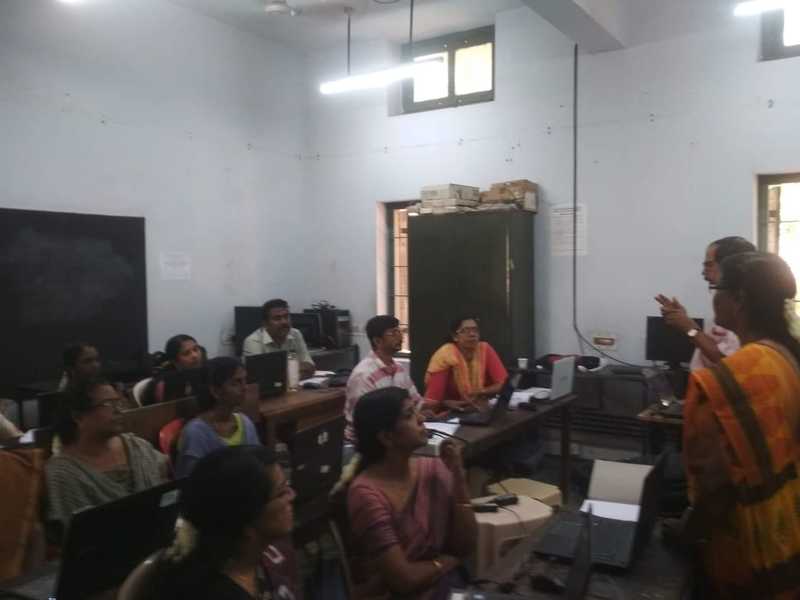
The teachers and trainers at the centre echo the role that technology plays in education in today’s day and age. They mentioned how all teachers are invested in their professional journeys, where tech plays a huge role today. They add that considering how comfortable children are with technology, it’s time for teachers to catch up, and platforms like StoryWeaver are a great way for teachers to integrate technology in the classroom.
For us in the StoryWeaver team, workshops and trainings are a great way for us to interact with and learn from the educators on the ground. The KITE workshop was no different.
We saw the trainers using Ammachi's Amazing Machines to highlight how stories could be used to teach Science, while another trainer showed how Busy Ants could be used to introduce vocabulary and grammar in early grade classrooms. The Readalong stories a big hit with the trainers and teachers alike, who agreed that AV stories are always a great way to engage students’ attention and build listening and reading skills. We would like to thank the KITE team for letting us be a part of their work, and are committed to supporting this collaboration to work with more teachers and children across Kerala.
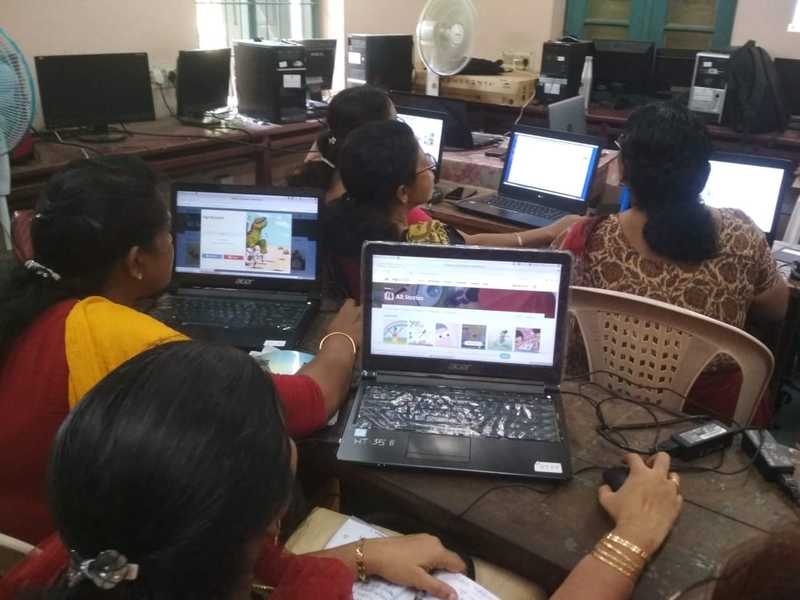
We came back from this workshop with a lot of ideas and suggestions, and of course, renewed commitment to put ‘a book in every child’s hand’. With partners like KITE, we know we’re a step closer to this vision.
Be the first to comment.
#FreedomtoRead 2019 Azad India Foundation on building a hyperlocal library of 100 Surjapuri stories
Posted by Amna Singh on February 16, 2019Azad India Foundation (AIF) was founded by Yuman Hussain in 1998 to seed initiatives in education & primary health care. The organisaton's activities reach out to marginalised women, adolescents and underserved children from rural and urban areas of Kishanganj district in Bihar. AIF has learning centres at 73 villages in three blocks of Pothia, Kishanganj and Thakurganj in Kishanganj, impacting 3,500 + children directly in the area. The children in AIF's centres are aged between 6-9 yeas and are either school dropouts or attending Madrassas. The centre's syllabus includes Hindi, English, Science and Maths. The main aim of the initiative is to ensure that children are ready to merge with mainstream education in state-run schools by grade 4.
AIF is also our first partner translator to have completed its goal of translating 100 StoryWeaver books into Surjapuri. Surjapuri is spoken in pockets of Bihar, West Bengal, Assam and Bangladesh by 1.2 million people. In Bihar, the language is spoken in Koshanganj, Katihar, Purnia and Araria districts. In an email interview Yuman Hussain tells us why creating a hyperlocal library in Surjapuri is important and how AIF managed to reach its goal of 100 books in collaboration with its project and cluster coordinators.
Tell us more about Azad India Foundation?
Azad India Foundation (AIF) has been working in Kishanganj district of Bihar from 2001. It started its activities with a non-formal education and vocational training centre for women. Over the years, AIF’s focus has been on the development of poor and marginalized children, adolescents and women. Our activities are in the fields of women’s literacy, formal school education, non-formal education, rural employment, income generating skills, SHG formation, and community health programmes. Currently, we are directly working with 3,500 children in the primary classes through learning centres in 73 villages of four blocks — Kochadaman, Pothia, Kishanganj and Thakurganj.
What are the long-term effects of a lack of easy access to resources in mother tongue languages for the communities that you work with?
Surjapuri is local language spoken among a large section of people in the Seemanchal area (Kishanganj, Araria, Purea and Katihar) of Bihar. Unfortunately, we have not seen any books or resources available in the local language for the children. There is a possibility that these languages will be lost over a period of time as more and more people now speak Hindi. In fact, when we started translating books in Surjapuri and shared them with the children and community members they were unable to recognize their own written language.
What are the benefits of creating a local digital library of joyful storybooks in Surjapuri?
Creating a hyperlocal library at StoryWeaver will help our children have access to and preserve Surjapuri as their language. It would also enable them develop their reading skills and enjoy stories from all over the world in their own dialect. The digital library is free besides being easily accessible to every one. The mobile friendly feature has made it possible for the books to reach even remote corners of the country.

Tell us more about your team of conributors and how you managed to translate and publish the 100 Surjapuri stories?
The stories were translated by the team of project Badhte Kadam comprising cluster coordinators Aslam, Chand, Juhi and teachers. They were really excited about creating Surjapuri stories as it gave them an opportunity to contribute to the preservation of their own language. Muzzamil, who is the project head, reviewed the stories. The stories were chosen according to the themes and levels of the children accessing them. The toughest part was the typing and uploading of the stories that was done diligently by Saqlain, our computer operator. AIF is really proud and thankful to its team members for completing this programme within the stipulated time period with sincerity and enthusiasm. We will continue adding more stories and hope to bring the joy of reading to all children.
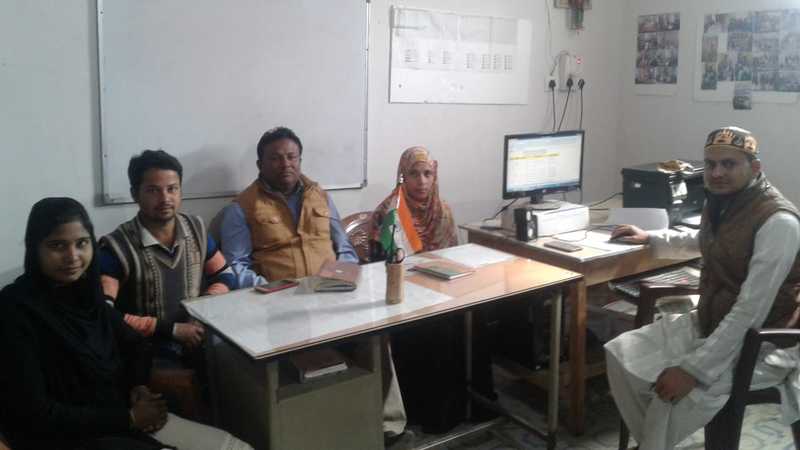 AIF's Team Badhte Kadam
AIF's Team Badhte Kadam
How does Azad India Foundation plan to use this digital library of a 100 books?
AIF plans to introduce these stories among the children at our learning centres. We are also spreading the message through social media about the StoryWeaver platform so that the community can access, use these stories and help in building this digital library further with many more books. This is a small step towards the preservation of local languages for which we are grateful to the StoryWeaver platform.
You can read the Surjapuri stories translated by Azad India Foundation here.
Be the first to comment.